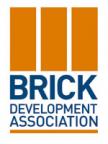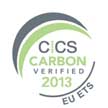Material Safety Data Sheet
Version 4 Issue Date 01/01/16 Download Ketley Brick Material Data Sheet
1. PRODUCT AND COMPANY IDENTIFICATION
All Ketley Brick products, Facing Bricks, Brick Slips, Pavers and Special Shape Bricks and Pavers are manufactured from the same material source, Etruria Marl, to produce the different colour range.
SUPPLIER
| KETLEY BRICK CO LTD | TEL:01384 78361/77405 |
| DREADNOUGHT WORKS | FAX: 01384 74553 |
| PENSNETT | Email: info@ketley-brick.co.uk |
| BRIERLEY HILL DY5 4TH | Web: www.ketley-brick.co.uk |
2. COMPOSITION/INFORMATION ON INGREDIENTS
Composition Etruria Marl
Typical Values %
| Na2O | 0.23 |
|---|---|
| MgO | 0.85 |
| Al2O3 | 18.68 |
| SiO2 | 66.98 |
| P2O5 | 0.14 |
| K2O | 1.69 |
| CaO | 0.55 |
| TiO2 | 1.06 |
| Cr2O3 | 0.012 |
| MnO2 | 0.47 |
| Fe2O3 | 9.34 |
3. HAZARD IDENTIFICATION
Mild mechanical abrasion to skin. Cuts from sharp edges.
4. FIRST AID MEASURES
Suitable dressing to affected area.
5. FIRE FIGHTING MEASURES
Non combustible product. Any packaging used may be combustible. Use suitable extinguishing agent for packaging materials.
6. ACCIDENTAL RELEASE MEASURES
|
Personal Protection |
Handlers should wear abrasion resistant gloves, safety glasses & safety footwear where appopriate |
|---|---|
|
Methods of Clearance |
Recover the product and stack onto pallets or skips |
|
Disposal |
At recognised landfill site |
|
Environment Protection |
No particular risk to the environment |
7. HANDLING & STORAGE
HANDLING:-
Individual bricks are generally delivered in packs which are heavy and great care must be taken in their handling. The weight of packs varies according to the size of the product and quantity per pack, but the maximum weight of each standard pack is approximately 1.4 tonnes. All equipment used to lift packs must be suitable and capable of safely supporting the weight of the pack involved.
It is recommended that packs with brick voids should always be lifted by the void holes using appropriate lifting forks. Some product is delivered on disposable wooden pallets and appropriate lifting forks should be used with a width of 90mm and be 1100mm long. When grabs are used the grabs should always pick the pack up on the non-strap side of the pack and as near to the bottom of the pack as possible.
Where packs are lifted moiré than 1 metre above ground level, a safety cage of adequate dimensions around the pack should be used. All personnel must stand well clear of packs when they are being lifted or moved.
Both steel and plastic straps are used to secure packs. All personnel involved in the handling of packs must take care when cutting the straps securing the packs, straps should be cut by operatives wearing personal protection, particularly eye protection and the operative should stand to the side of the strap and not in line with it, as the tension on the straps may lead them to spring away from the pack when released. Straps must not be burst by the application of levered pressure and packs should never be lifted by the straps. It should also be noted that straps can deteriorate over time.
Some pack configurations can be split into an equal number of blades, these blades are only stable if stored or moved around while laid flat on a pallet they must not be lifted or moved in the vertical position.
AVOID: Abnormal shocks to the packs or sliding one pack against any face of another pack
MANUAL HANDLING:-
It is recommended that only minimal quantities are handled at any one time to prevent strain or hand damage. An individual brick/paver weighs approximately 3.3kg and industrial safety footwear should be worn by handlers. Repetitive handling of any heavy product including bricks can give rise to Repetitive Strain Injuries and specialist help should be sought for anyone involved in this type of work.
PERSONAL PROTECTION:-
If bricks are hit or cut with any tools, eye protection should be worn. Additionally any personnel carrying out cutting must wear suitable respiratory protection meeting specification BS EN 149 (Specification for filtering half masks to protect against particles). Cutting should be avoided where possible. Wet cutting is a preferable method of cutting as it reduces the amount of dust generated.
STORAGE:-
Packs must be stored on firm level ground, full packs should be stacked no more than ground conditions allow and care must be exercised to ensure that the stack is entirely stable in all circumstances. In situations where the ground is suitable, (level, dry and designed to carry the weight) it is possible to stack packs up to 3 high on top of each other. It is essential that a competent fork lift driver takes great care to place packs on top of each other without. If there are any indications of instability, such as stack leaning, then the packs should be immediately re-stored at ground level.
8. COSHH (Control of Substances Hazardous to Health Regulations)
In general fired clay products contain 50-70% silica; if power tools are used to cut products substantial amounts of dust may be produced. Depending on the environment and the method of cutting, it is possible that some respirable silica may be generated. The Work Exposure Limit (WEL) for respirable silica is currently 0.1mg/m3 (2006)
9. PHYSICAL & CHEMICAL PROPERTIES
| Appearance | Rectangular Fired Clay Block differing in colours |
|---|---|
| Boiling Point | N/A |
| Flash Point | N/A |
| Bulk Density | 2293kg/m³ |
| Autoignition Temperature | N/A |
| Oxidising Properties | N/A |
| Odour | None |
| Melting Point | Plus 1200º C |
| explosive Properties | N/A |
| Vapour Pressure | N/A |
| Solubility | N/A |
| Flammability | N/A |
10. STABILITY & REACTIVITY
| Stability | Stable |
|---|---|
| Incompatibility | None Known |
| Conditions to avoid | None |
| Hazardous Decomposition | None Known |
11. TOXOLOGICAL INFORMATION
This product provides minimal threat to human health.
12. ECOLOGICAL INFORMATION
Inert materials which remain stable over time.
13. DISPOSAL CONSIDERATIONS
Waste from these products is not classified as hazardous and may generally be disposed of at a normal tipping site that has been licensed for the disposal of inert waste.
14. TRANSPORT INFORMATION
No special requirements for transport by road, rail, sea or air.
15. REGULATORY INFORMATION
Not subject to classification.
This safety data sheet will be periodically reviewed and updated as required. Reasonable care has been taken in the preparation of the information contained in this Material Safety Data Sheet and is given in good faith. However, no warranty or representation with respect to such information is intended or given.









